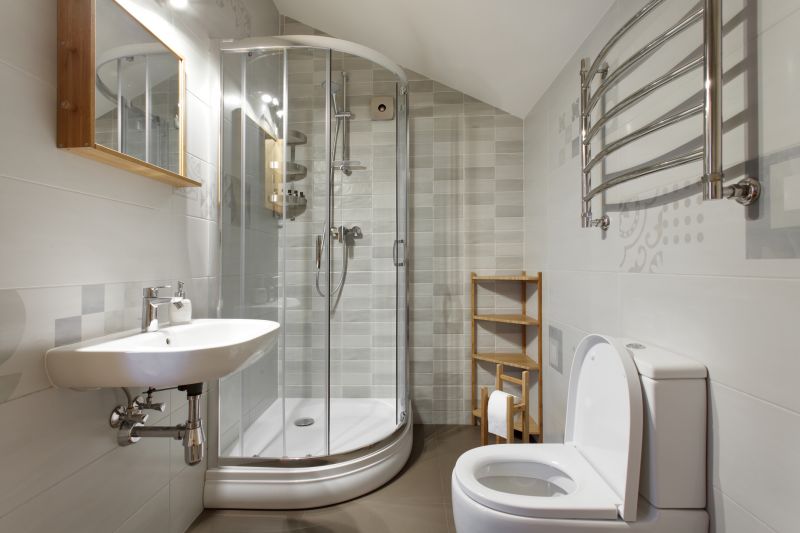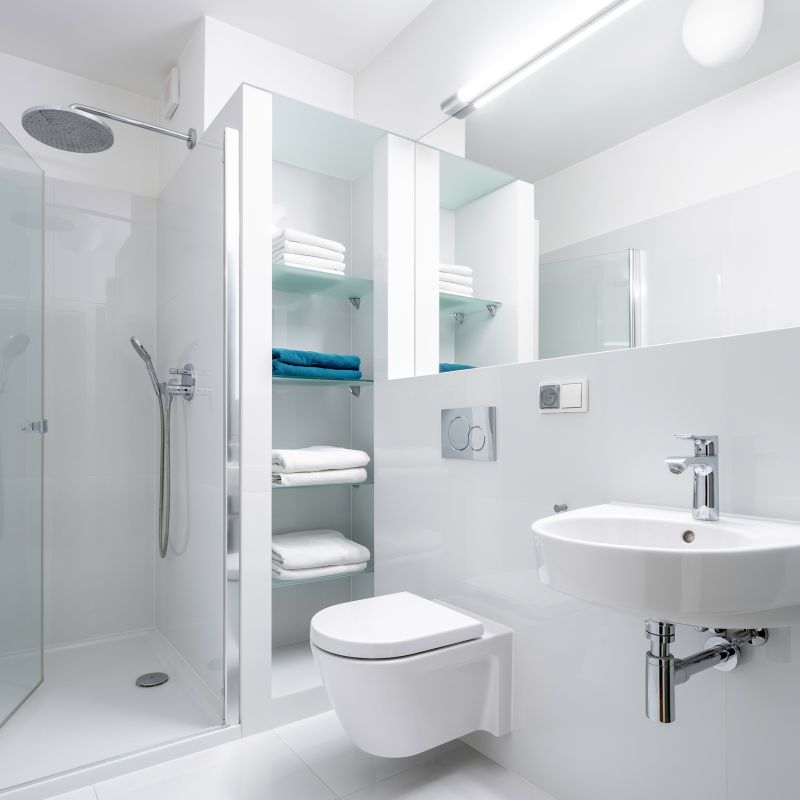Practical Shower Layouts for Compact Bathroom Spaces
Designing a small bathroom shower requires careful planning to maximize space while maintaining functionality and style. Efficient layouts can transform compact areas into comfortable, visually appealing spaces. Incorporating innovative solutions and creative ideas can make small showers feel more spacious and inviting. Understanding different layout options and design principles is essential for achieving a balanced and practical bathroom environment.
Corner showers utilize room corners to save space, making them ideal for small bathrooms. They often feature sliding or pivot doors, providing easy access without encroaching on the limited floor area.
Walk-in showers offer an open, barrier-free design that enhances the sense of space. They often include frameless glass panels, creating a sleek look and easier maintenance.




| Layout Type | Advantages |
|---|---|
| Corner Shower | Maximizes corner space, ideal for small bathrooms. |
| Walk-In Shower | Creates an open feel, easy to access. |
| Tub-Shower Combo | Combines bathing and showering in limited space. |
| Recessed Shower Niche | Provides storage without protruding into the room. |
| Glass Enclosures | Enhances natural light and visual space. |
| Sliding Doors | Save space compared to swinging doors. |
| Pivot Doors | Allow wider entry in tight spaces. |
| Curbless Shower | Offers seamless transition and accessibility. |
Selecting the appropriate shower layout depends on the specific dimensions and features of the bathroom. Small bathrooms benefit from designs that prioritize openness and storage efficiency. Incorporating elements like frameless glass panels and minimal hardware can further enhance the perception of space. It is also important to consider ease of cleaning and maintenance when choosing layout features, ensuring the shower remains functional and attractive over time.



